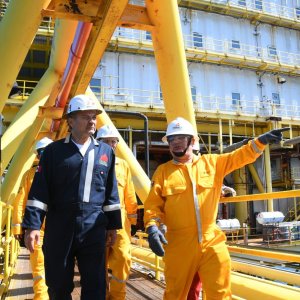Industry Decarbonization: Why and Where to Start?

STORY INLINE POST
The world has an increasing and prevailing need to reduce CO2 emissions to the atmosphere resulting from human activity. Why is that the case? The obvious and most known answer is because it is the only way to achieve climate stabilization, but why do we need climate stabilization? The answer is simple: If we don’t reduce the average global temperature we will have to pay the price; in fact, we are already paying the price.
Heat waves in the last several years, for example, have exacerbated chronic conditions, including cardiovascular, respiratory, cerebrovascular diseases, and diabetes-related conditions in weak or otherwise vulnerable people. According to the World Health Organization, it is estimated that at least 15,000 people will die specifically due to the heat in 2022, and this is just the beginning.
There are multiple scenarios analyzed by multiple environmental experts where the best case will lead to an increase of global temperatures of +2.1°C and, in the worst-case scenario, to a rise of +3.9°C, which according to experts would result in cities like Miami, Rio de Janeiro, Shanghai and Osaka being at risk from rising sea levels and approximately 275 million people worldwide would be required to relocate to escape flooding. This scenario may seem very far away from our current reality —almost like a science fiction movie — but it is not.
The other side of the coin is the enormous economic opportunity that decarbonization represents. The energy transition is fueling demand for low-carbon emissions products and increasing growth opportunities for companies that are implementing net-zero strategies, in addition to the increasing investment appetite for energy transition and sustainability projects. It is projected that capital spending on physical assets for energy and systems contributing to net-zero strategies will be about US$275 trillion by 2050. On the contrary, products representing high emissions are shrinking in demand due to companies facing increased operational costs and energy security challenges associated with their dependency on fossil fuels.
Undoubtedly the race toward a decarbonized economy has started and there are going to be winners and losers. While the transition will create investment opportunities, industries with high-emissions operations are likely to face substantial adverse effects on demand, production costs, and employment.
The industry will have to join this transition whether it likes it or not. The first question is where to start?
There is plenty of information, along with experts and certifications, that will help guide us through the decarbonization journey. That is not really the challenge. The main challenge remains internal. If your company is thinking of embarking on this journey, the first step will be to ensure that the local management has clarity on the internal drivers and motivations to decarbonize the company’s operations. The problem is that frequently net-zero and decarbonization targets are mandated by upper management far away from the daily operational activities; thus, the spirit and essence of these decisions are not always well communicated or transmitted to the local management. Moreover, the decarbonization targets as well as other operational targets do not always consider the impact and importance of accomplishing these environmental targets.
The implementation of decarbonization strategies is not just a technological-operational transition but often also requires a philosophical paradigm shift as companies will have to reinvent the way they produce, which, furthermore, will require an organizational cultural change. It is necessary to identify whether the organization is ready and willing to change to adopt decarbonization strategies. This is particularly true for the industrial sector where processes, people and methods have been fine-tuned over many years and resistance to change is higher than in other industries, such as IT. Resistance to change also has a cost. If not well managed, the cost may be higher than the change itself, as you may end up losing out to your competition.
A professional change management program will include consciousness-raising, communication, training, and the definition of relevant KPIs to drive an effective transition. This will ensure people are focused on the right tasks and the likelihood of a successful energy transition is higher and more cost-effective.
Once the internal organization is ready emotionally and operationally to embrace the energy transition, then it is time to implement the technical and economic changes. The technical changes imply setting a baseline of the current energy balance by conducting an energy diagnostic. Once the baseline is established, the identification of inefficiencies in the energy generation and energy use points will proceed. This aims to reveal areas of opportunity. Based on the opportunity areas, a decarbonization roadmap is defined toward a 100% reduction in CO2. This roadmap will typically include energy efficiency programs and a mix of clean technologies strategies.
However, if people at all levels of the organization are not ready to implement, measure and follow up on these new strategies and actions, the investments in decarbonization will fail.
Business is people, and business success depends on people, not capital. There are many ways to measure the profit and performance of new strategies, the problem is that if management is not aware that value creation depends on people and their clear comprehension of the new strategies, the cost of productivity inefficiencies will be bigger than the cost of capital required for the implementation of new strategies.
If you are about to start or want to reinforce your decarbonization strategy and implementation, start by preparing your internal associates and they will make sure that the company will achieve their net-zero targets effectively and on time.
























